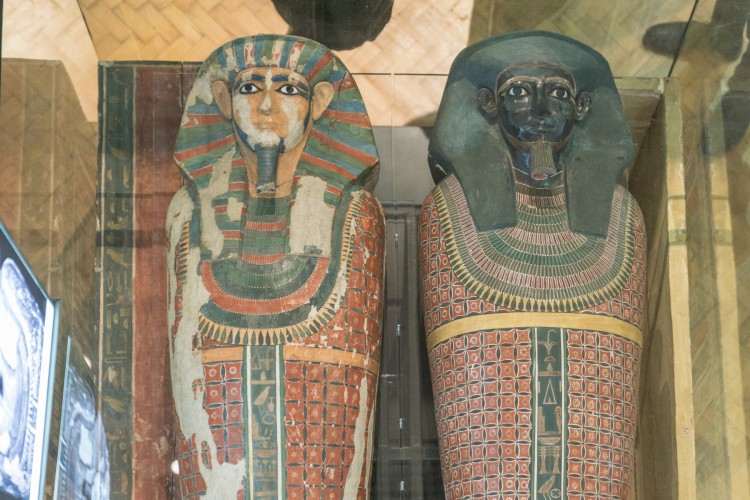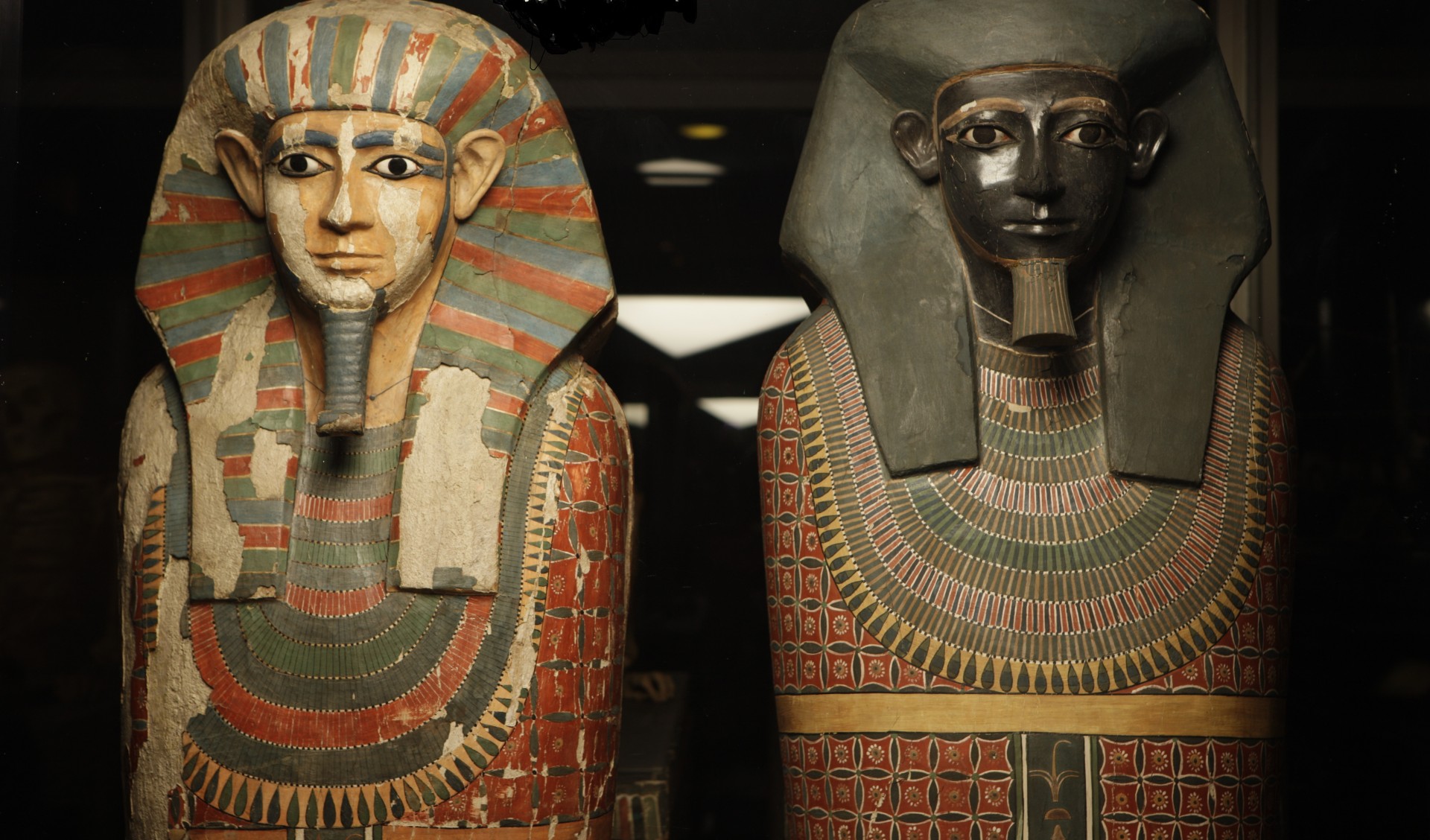Using ‘next generation’ DNA sequencing scientists have found that the famous ‘Two Brothers’ mummies of the Manchester Museum have different fathers so are, in fact, half-brothers.

The Two Brothers are the Museum’s oldest mummies and amongst the best-known human remains in its Egyptology collection. They are the mummies of two elite men – Khnum-nakht and Nakht-ankh – dating to around 1800 BC.
However, ever since their discovery in 1907 there has been some debate amongst Egyptologists whether the two were actually related at all. So, in 2015, ‘ancient DNA’ was extracted from their teeth to solve the mystery.
But how did the mystery start? The pair’s joint burial site, later dubbed The Tomb of The Two Brothers, was discovered at Deir Rifeh, a village 250 miles south of Cairo. They were found by Egyptian workmen directed by early 20th century Egyptologists, Flinders Petrie and Ernest Mackay. Hieroglyphic inscriptions on the coffins indicated that both men were the sons of an unnamed local governor and had mothers with the same name, Khnum-aa. It was then the men became known as the Two Brothers.
When the complete contents of the tomb were shipped to Manchester in 1908 and the mummies of both men were unwrapped by the UK’s first professional female Egyptologist, Dr Margaret Murray. Her team concluded that the skeletal morphologies were quite different, suggesting an absence of family relationship. Based on contemporary inscriptional evidence, it was proposed that one of the Brothers was adopted.






